Red oak tree care and growing guide: tips on how to grow these majestic trees
Fast growing and reaching impressive heights, red oak trees are a classic American tree. Find out if they are right for your backyard with our expert guide

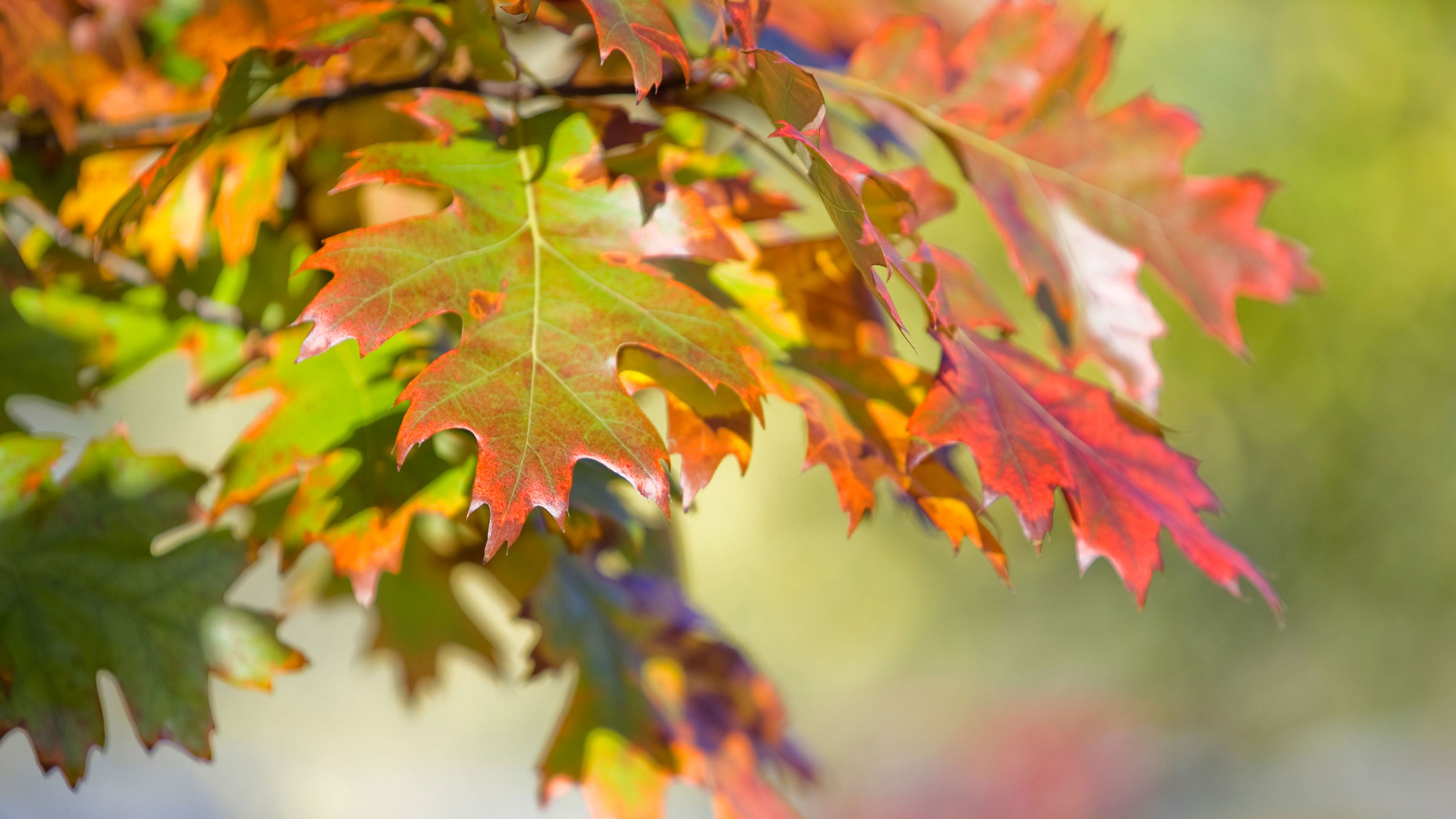
Red oak, sometimes known as the Northern red oak (Quercus rubra), is a classic American tree. Native from Quebec and Minnesota in the north to Alabama and Arkansas in the south, it is not found west of Kansas and Oklahoma. Red oak is the state tree of New Jersey.
Joseph S. Illick, a pioneer in the new profession of forestry in the early 1900s, and Pennsylvania’s Chief Forester, described the red oak as 'one of the biggest, stateliest, and handsomest trees of eastern North America.'
This deciduous fast growing tree is long lived, deep rooted and adaptable, reaching 50-70ft (15-22m) in height, often reaching 20ft (6m) after ten years and developing a more or less pyramid shaped crown up to 45ft (13m) across. The leaves feature from seven to 11 sharply pointed lobes with bristled tips and are dull dark green above and bluish-green underneath.
Northern red oak also has unique bark – ridged vertically down to the ground, with shiny stripes between.
In spring, yellowish-green, tassel-like catkins hang from the branches although in some people the pollen produces an allergic reaction. In mature trees the catkins are followed, two years later, in the fall, by acorns which are a valuable food for squirrels, chipmunks, deer, wild turkeys and bluejays. Many birds find the acorns unpalatable when fresh, so they bury them and return for them when the distasteful tannins have lost their strength.
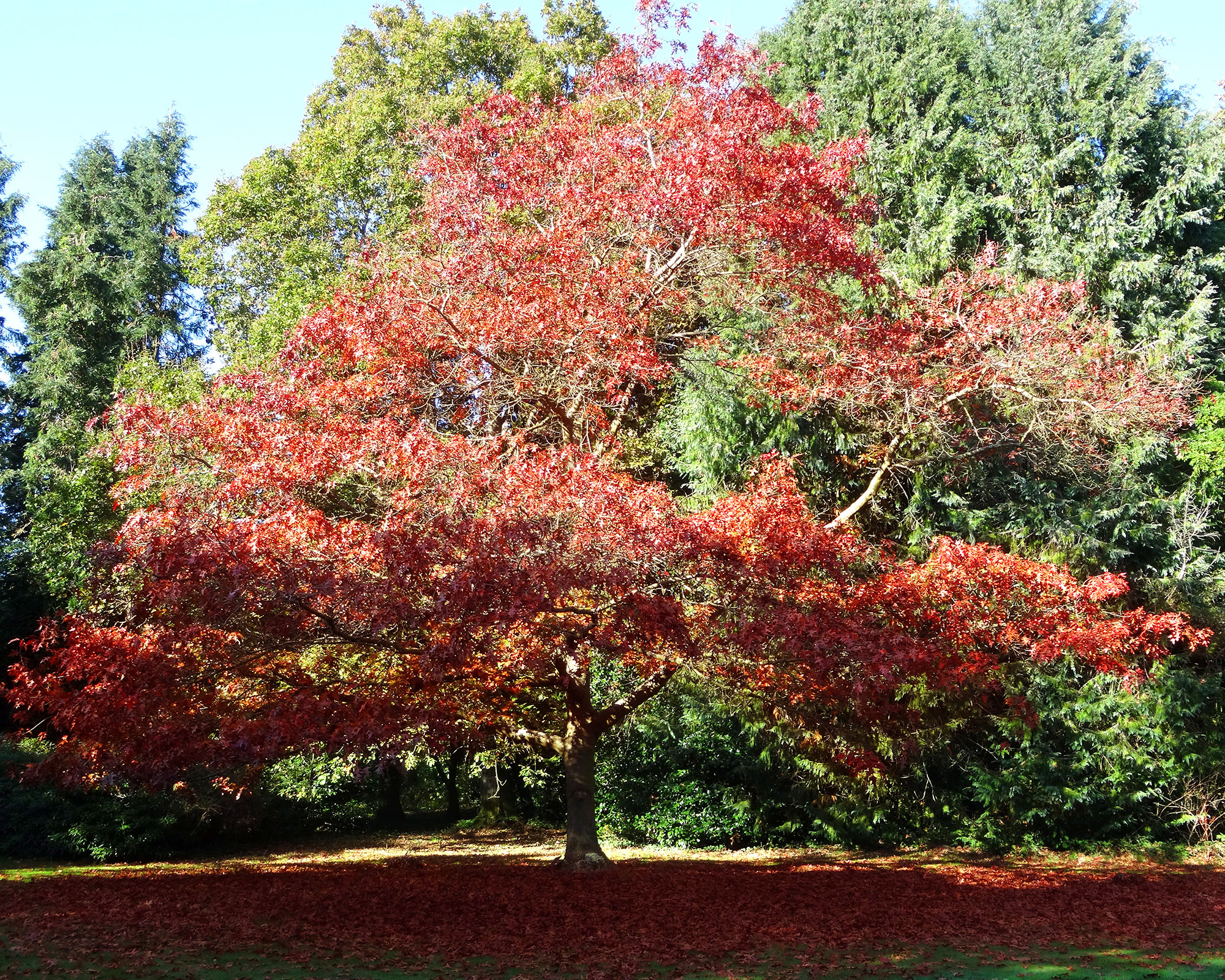
Red oak tree: key features
- Plant type: deciduous tree
- Mature size: 50-70ft
- Soil type: most except waterlogged or parched
- Soil pH: acid
- Best time to plant: fall, early spring
- Flowering time: mid to late spring
- Flower color: yellowish green
- Hardiness zones: USDA Z4
- Scientific name: Quercus rubra
- Common name: Red oak
Special features of red oaks
- Foliage color Some types of oak are evergreen trees but most, including the red oak, are deciduous. The upper surfaces of its jagged leaves are a dark, dull green while the undersides are slightly silvery in color and are look pretty when ruffled by the breeze. In fall, as winter approaches, it becomes a wonderful tree with red leaves as the foliage develops scarlet or orange or yellow tones, or a mixture of them all, creating a spectacular fiery display.
- Shade providers Red oaks are invaluable for providing welcome shade in areas with hot summers. Also, their roots grow more deeply than those of many trees so landscaping around trees with plants that will thrive in the shade is less of a problem. Plant a red oak to provide a shaded summer sitting area, to shade the house from scorching summer sun and to provide shade for the huge palate of shade loving plants.
- Adaptability Red oaks have an unexpected ability to thrive in a wide range of soil types and situations. They are especially useful in suburban areas as they tolerate the poor and compacted soils sometimes found in new subdivisions. They also tolerate salt so thrive by the sea and when salty runoff from roads may reach their roots after a snowy winter. But they dislike lime.
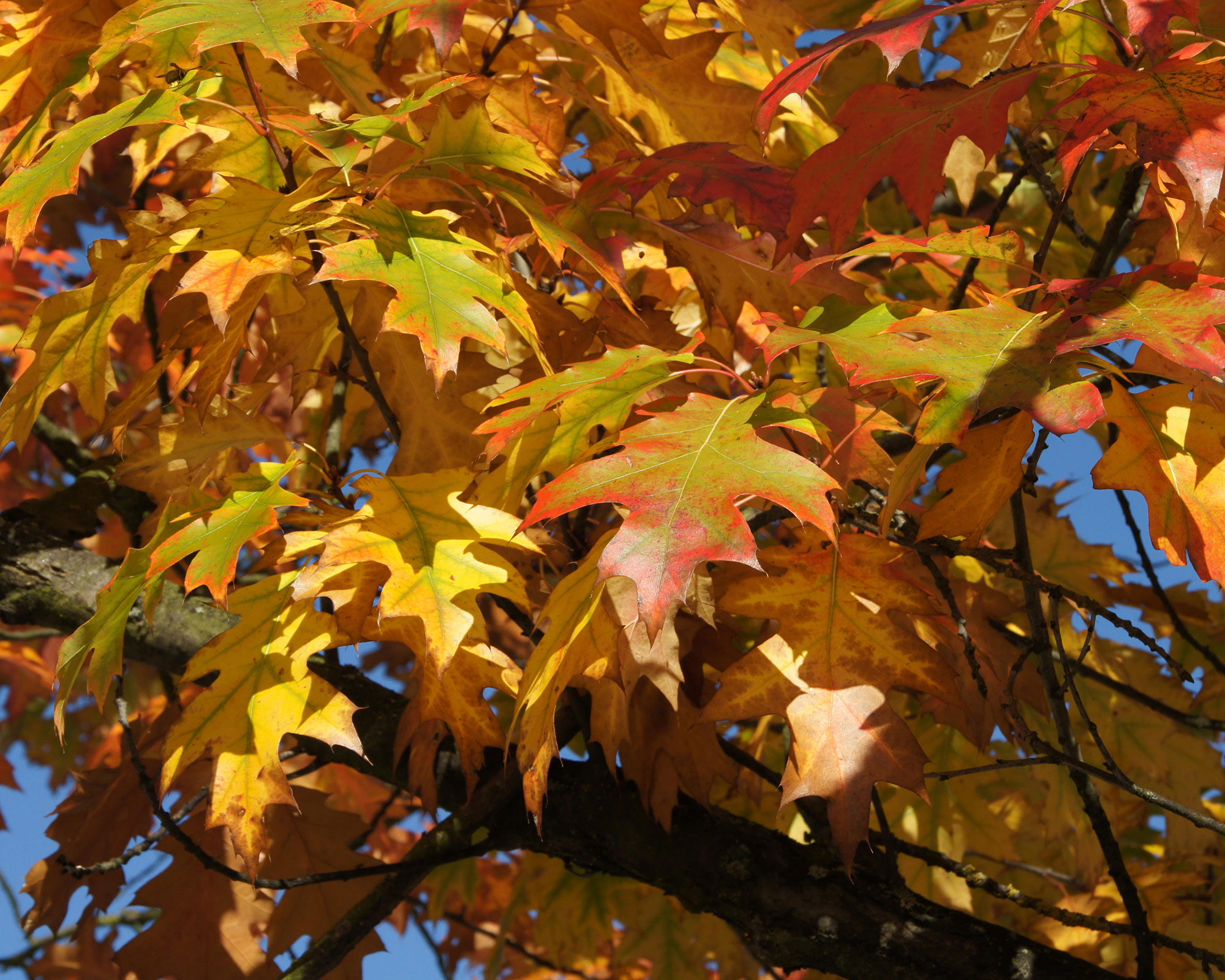
Where to plant red oak trees
Red oak is 'widely considered a national treasure,' say the Arbor Day Foundation. 'It is valued for its versatility and hardiness in urban settings.'
Where there is space, red oaks can be planted as part of a forest or wood, with other native trees and shrubs. On a smaller scale, a small mixed planting of red oaks, maples, and native shrubs can bring the wilds closer to home.
As a backyard tree, a red oak makes a superb shade tree – particularly as it grows so quickly and its roots do not compete seriously with nearby plants.
Choose an open situation in full sun or with a few hours of shade each day. It is important to think ahead: this is a strong-growing tree that could eventually reach 75ft (23m) in height so, if you are planting a red oak as a specimen shade tree, allow for this and chose the site carefully.
When and how to plant red oak trees
Late fall and early winter are the best times to plant red oaks. However, trees can be planted through the winter until early spring in areas where the ground is not frozen. Keep in mind that when planting bare root trees or seedlings, as well as more mature bare root plants, that they are best planted within three days of their arrival.
Red oaks are adaptable so will thrive in a variety of soils that are neither parched nor waterlogged but they are long lived trees so it pays to give them a good start.
The size of the planting hole depends on the size of the tree being planted. Seedling trees are often planted with no preparation at all: make a hole with a trowel, drop in the seedling and firm with your boot.
For larger specimens, dig a hole at least twice the diameter of the pot or root system, mix the soil from the hole 50:50 with planting mix or garden compost and use this to fill the hole and cover the roots. Taller specimens should be supported with a stake tied about 2ft (60cm) above the ground. Water well, before mulching with weed-free organic matter.
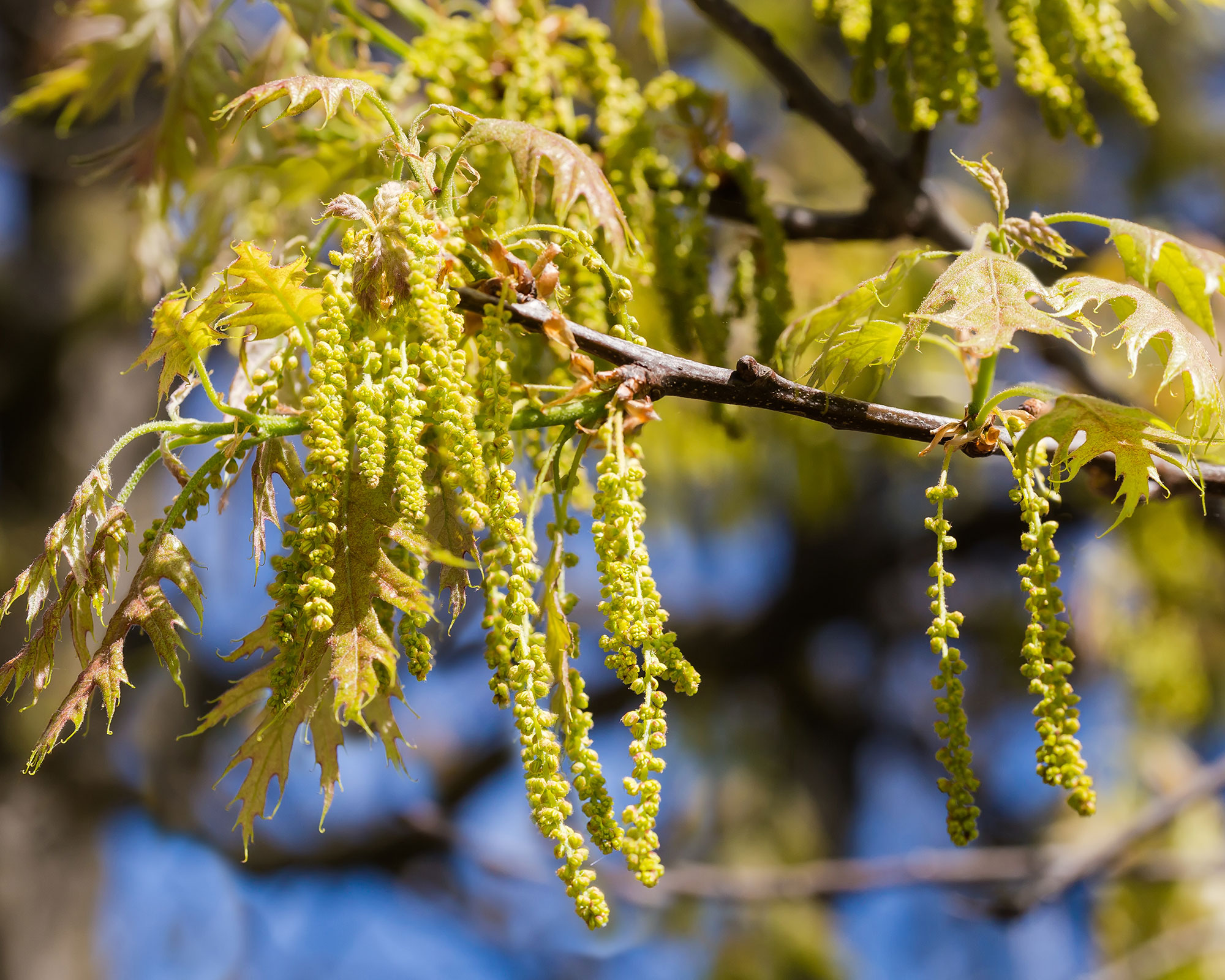
How to care for red oak trees
Red oaks are fairly low maintenance trees as they need relatively little long term care. Ensure that the roots do not dry out in the first few years after planting, renewing the mulch when necessary will help with this. Check that supports remain in place, and doing their job, and renew them if necessary. After about five years, if your oak is growing well, the support can be removed.
Renew the mulch every year or two, when necessary. Fertilizing annually in early spring may not be necessary but on poor soils an annual treatment with Tree-tone or another specific tree fertilizer will help.
Pruning will not usually be necessary unless a branch is damaged, in which case cut off the damaged growth, using a pruning saw to cut just above a junction with a healthy branch. If branches are rubbing against each other, cut out the thinner branch. As your tree develops and matures it will usually need little or no attention – except raking the leaves.
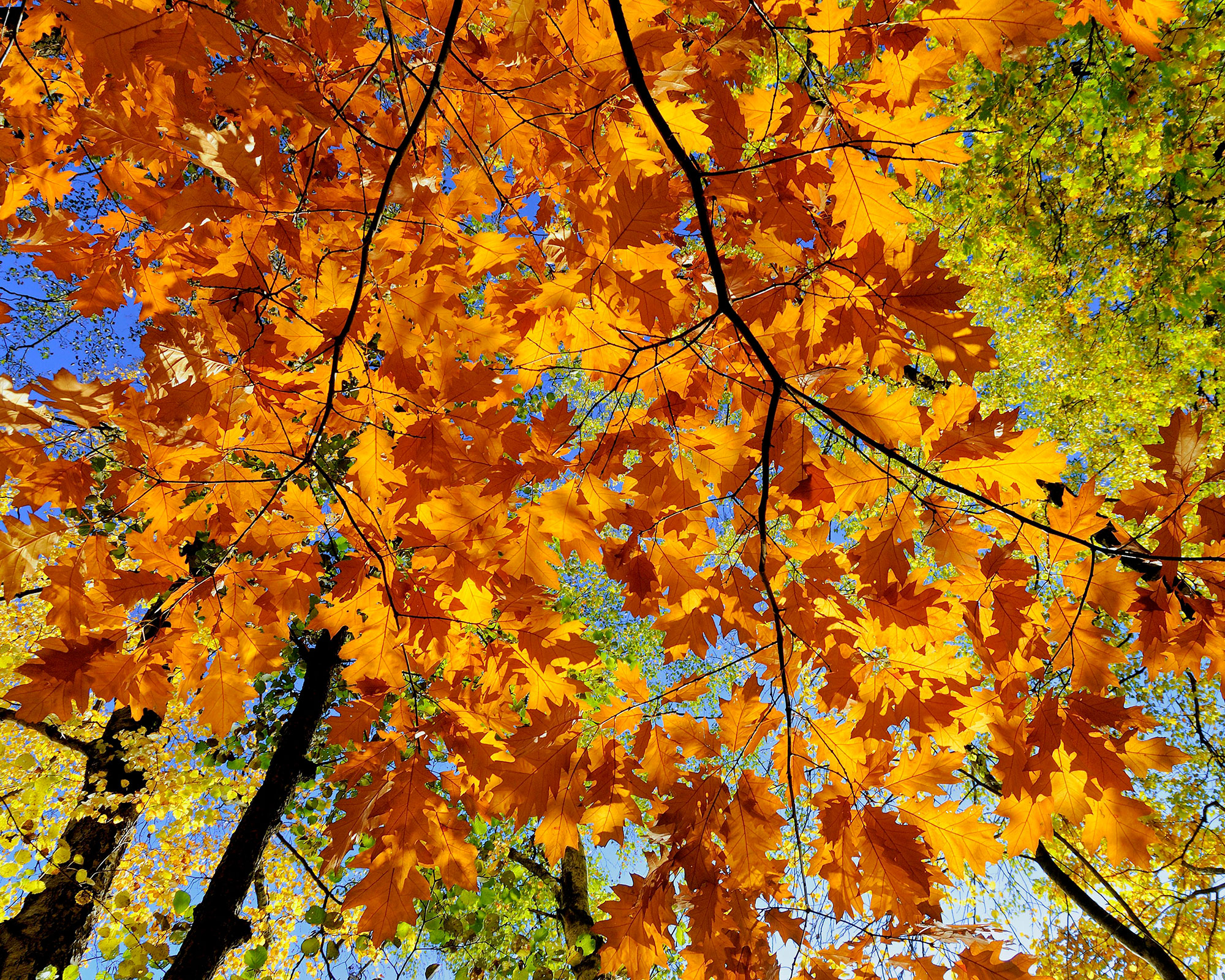
Making more red oaks
Growing red oaks from acorns is easy, but you will probably have to collect acorns from underneath a tree in a neighboring yard as red oaks may not start producing acorns until they are 40 years old.
Fill a 3-4in (7.5-10cm) flower pot with potting mix, level off, tap the pot on the table to settle the mix. Make a hole in the middle of the compost and drop in an acorn. The top of the acorn should be an inch below the surface. Top up with potting mix, water well, and stand outside in a cool and sheltered place. Protect your acorns from birds, squirrels and other critters using fine wire mesh.
Ensure that your pots of acorns never dry out, a shoot should emerge the following spring and in the fall your young oak can be planted.
Red oak problems and how to solve them
If red oaks are growing well, significant problems rarely arise. As ever, prevention – in the form of giving your tree a good start and looking after it as it matures – is the best cure.
However, caterpillars, scale insects and borers sometimes cause problems but can usually be dealt with using an organic pesticide. You may also find evidence of diseases such as mildew, anthracnose, wilt and canker.
The best guidance will be provided by your local extension service where they have the best local expertise in dealing with oak problems.
Red oak diseases
Oak wilt is a serious disease of oak trees, and red oaks suffer more widely and die more quickly than other oaks. Oak wilt was first seen in in Mississippi in the 1940s but has spread throughout the Midwestern and Eastern United States and continues to spread.
The Forest Service explains: On red oak…'symptoms are often expressed in spring but can continue into the summer. Symptoms start from the tip and outer edges of leaves and move toward the midrib and base of leaves, often with a distinct margin. First, leaves turn dull green or bronze, can appear water-soaked, and wilt. Later, the leaves turn yellow and/or brown, curl around the midrib, and are shed at branch tips. Finally, both green and symptomatic leaves throughout the crown fall. Symptoms often develop quickly throughout the crown in red oak. Trees may die only one or two months after symptoms appear and seldom survive more than a year.'
Prevention is the only cure. The most frequent origin of an infection is when infected logs brought into an area from another part of the state, or the country. This is why logs brought from outside the area are not allowed on campsites.
There is no treatment, infected trees should be felled and removed. Your local extension service can give advice.
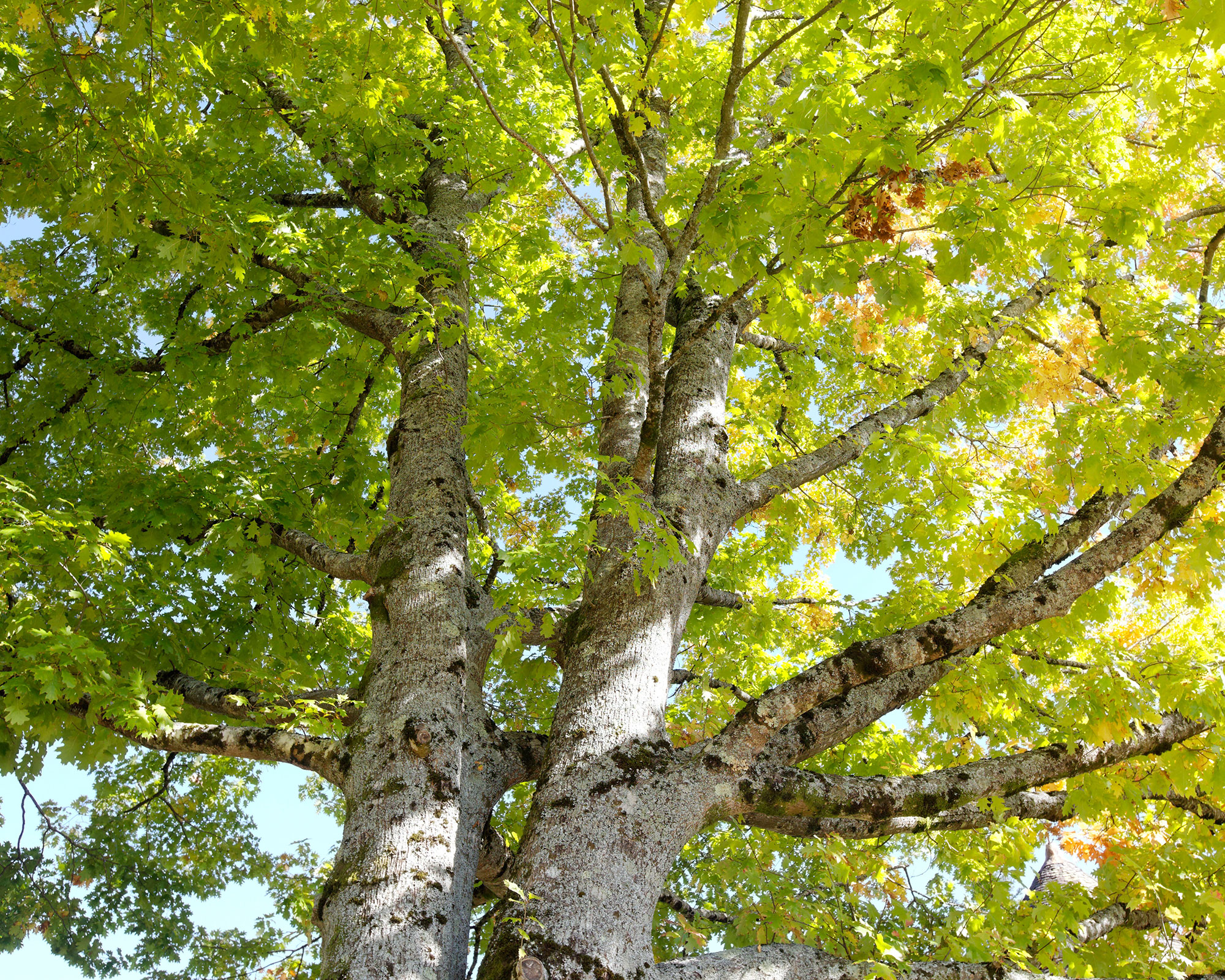
What is the difference between a red oak and a white oak?
Red oak (Quercus rubra) owes its name to the reddish coloring of its wood, while white oak (Quercus alba) owes its name to the whitish undersides of its leaves. The leaves of red oaks also tend to have pointed tips to the lobes of their leaves, white oak leaf lobes have rounded tips. Red oaks also usually have less heavily ridged bark than white oaks.
White oak wood is more water resistant than the wood of red oaks when used in construction, while white oak is also more dense and burns hotter and more slowly than red oak and with less smoke.
Is the red oak good for wildlife?
The National Wildlife Federation tells us: 'We all know that from tiny acorns mighty oak trees grow, but we should add that from tiny acorns also grow deer, gray squirrels, red squirrels, chipmunks, wild turkeys, crows, flying squirrels, rabbits, opossums, blue jays, quail, raccoons, wood ducks – more than 100 U.S. vertebrate species eat acorns. In autumn and winter, the acorn is the cheeseburger of the forest ecosystem – fairly easy to find and nicely packaged. They are one of the most valuable food resources available for wildlife.'
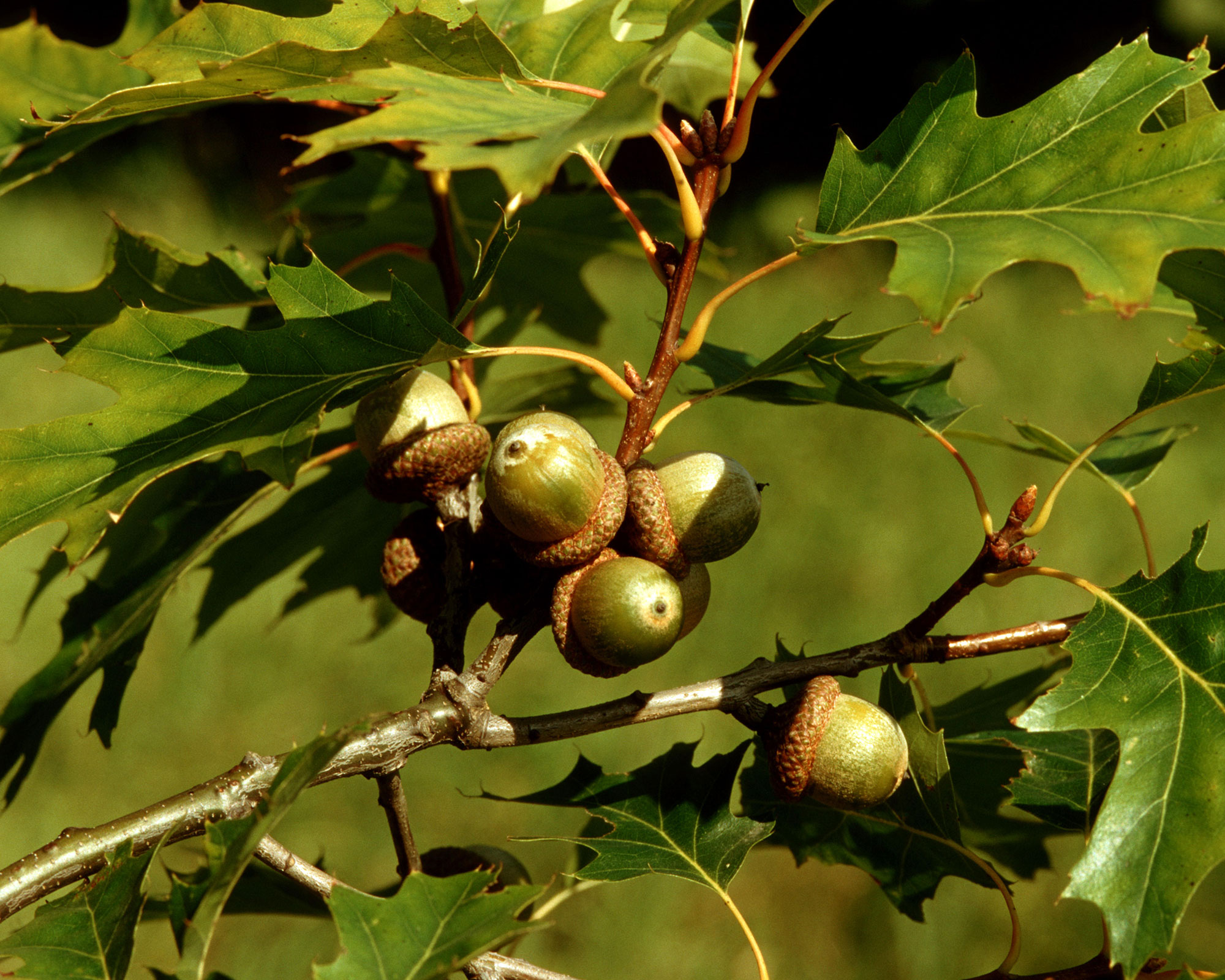
How fast do red oak trees grow?
The red oak is fast growing so is not a good tree for small gardens. It will often grow 2ft (60cm) per year during its first 10 years and, although growth will then usually slow, at its full height a tree may well reach 75ft. A few trees planted in the 1970s and even the 1980s have reached more than 100ft (30m) in height!
So while its rapid early growth will often provide you with a good sized specimen that quickly makes an impact, be aware that a red oak can become too large for many backyards. As always, when it comes to choosing a tree for your garden, it pays to think first, plant later.
How long do red oak trees live?
It is said that a red oak tree can live for 500 years. A small number of trees are over 300 years old, and a tree in Toronto is over 250 years old. But red oak trees tend to decline in vigor and health once they pass the age of a 150 years.
How to buy red oak trees
Red oak trees are available across the country, in areas with a suitable climate. They are popular in Arbor Day promotions organized by the Arbor Day Foundation, the non-profit organization that has been encouraging tree planting for more than 50 years.
Small plants, some only 12in (30cm) high, are often available in local fall planting promotions, for example, but need careful attention – and especially protection from deer – in their early years.
Garden centers and local nurseries will also usually carry red oak, especially around fall planting time. Buy the largest tree that your budget allows, but remember that these are strong growing trees and even a small tree will soon develop into an impressive feature.
By mail order, trees 6-12in (15-30cm) tall are available in bulk at less than a dollar each, if you’re planting a forest, or very large specimens are also available for hundreds of dollars. Be aware that large specimens sometimes have difficulty establishing themselves after planting.
Where to buy red oak trees in the US:
- Shop red oak trees at Amazon
- Shop red oak trees at The Arbor Day Foundation
- Shop red oak trees at Forest Farm
- Shop red oak trees at Monrovia
- Shop red oak trees at Nature Hills
Where to buy red oak trees in the UK:

Graham Rice is a garden writer who has won awards for his work online, and in books and magazines, on both sides of the Atlantic. He is a member of a number of Royal Horticultural Society committees and the recipient of the 2021 Garden Media Guild Lifetime Achievement Award.
